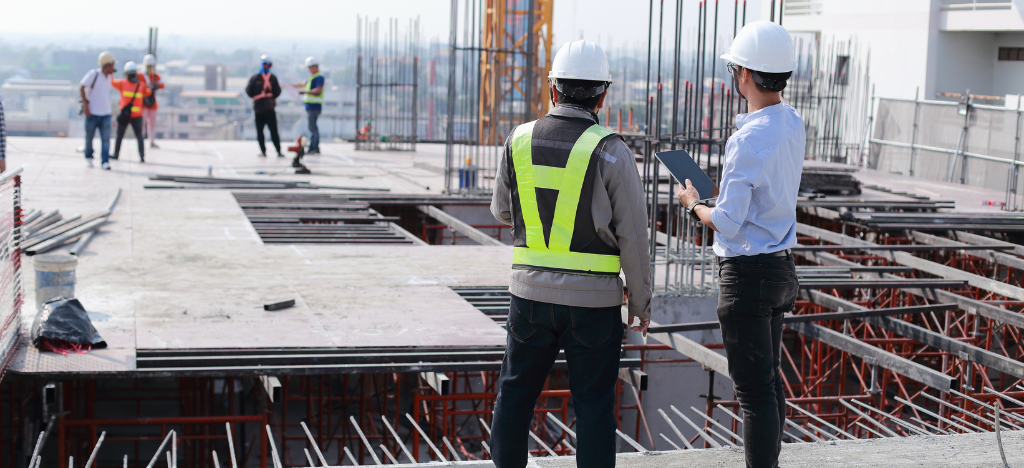
Crane maintenance on construction sites
There are 11 Types of Cranes Commonly Used in Construction and in the Oil and gas industry. All these types require skilled and regular maintenance whether on-site or even in storage. And Cranes play a key role in making industrial and construction operations smooth sailing and less challenging. They provide support whenever needed and are rarely noticed when performing at their best. And like any other piece of equipment, all cranes require regular maintenance to service function properly. But if not properly maintained, they may cause project delays, or worse—safety risks.
And it all starts from the first decision of purchasing, Hence when purchasing a crane it will come with information about how to properly use it. This will include a section on what type of maintenance the crane will require in order to operate properly. This includes things like changing fluids, replacing belts, and other specifications. Following the recommended maintenance steps for a crane is the best way to extend its life and keep the job site safe.
So, there are 3 Key Benefits of Crane Maintenance to keep the machines in good condition to perform the job:
1. Crew and Employee Safety
As Safety should be the top priority on any construction site, which is why all equipment—cranes included—is properly maintained. As well neglecting maintenance and postponing scheduled inspections will inevitably increase the risk of equipment failure and lead to a higher probability of accidents occurring with potential injuries onsite. And these hazards will not only affect your reputation as a contractor but also will increase the cost of your operations and will – eventually
2. Risk Management Inspection Compliance
As contractors or owners of the equipment, you will need to undergo many inspections regarding onsite safety and risk management. During these visits, the inspector will be checking whether the cranes you are using are compliant with best practice Occupational Safety and Health Regulations and other relevant work health and safety regulations and codes.
Some of the things the inspectors will be checking include:
- The registration of the design and any alterations made to the crane
- Its compliance with maintenance programs
- Its compliance with maintenance programs
- The availability of ladders and other accessibility assistance tools for when repairs need to be conducted
- Complete records of the crane maintenance, testing, and inspection
- Operator training and license requirements in performing their duties
- The proper maintenance of lifting gears such as slings, chains, and attachments.
3. Fewer Chances of Equipment Failure
As mentioned earlier, regular maintenance can reduce, if not prevent, equipment failure on the construction site. This means you would have minimal downtime for any repairs to the crane which can effectively reduce the possibility of daily project costs continuing with reduced productivity.
Other types of cranes:
Some of the contractors might wonder about the mobile equipment more than the fixed ones according to their inventory of equipment. So, Proper mobile crane maintenance must be given the highest priority. As mobile equipment are far more affected by many conditions such as the environmental conditions and the work conditions themselves, Cranes are machines that feature a hoist chain and sheaves used to move load vertically and horizontally. A mobile crane serves the same basic function as other cranes; they lift heavy objects into place, usually on construction sites. They come into their own where space is at a premium. Mobile cranes are usually hired and driven to the building site where they are deployed. Albeit they are built with high endurance power, if they are not put under frequent maintenance schedule, they can develop issues.
Mobile cranes lift things over people’s heads, buildings, other structures, and vehicles, and this is potentially dangerous. It is imperative that maintenance is given the highest priority and that rigorous schedules are in place that meets both legal requirements and the manufacturer’s instructions. According to experts, maintenance of mobile cranes and repairs should be handled by professionals so the equipment remains safe for utility.
Designing a Custom Crane Inspection and Maintenance Schedule
It’s not all the same when it comes to equipment maintenance and inspection in the work site. So, Every crane should have a custom inspection and maintenance plan, based on the use of the machine and the manufacturer’s recommendations. Not only does this plan improve safety for employees and other people on-site, but it is important to ensure that you are in compliance with the requirements established by OSHA.
General notes
These inspection and maintenance steps are essential to identifying signs of damage or corrosion in the early stages.
For any crane type in your locations. Proactive care of the equipment minimizes the possibility of an accident, which helps to avoid injury and expensive material damage on the job site.
Not only are the potential risks identified through inspection and regular maintenance.
But it is also an opportunity for safety improvements that need to be addressed.
Preventive maintenance is a key factor for safety, and cost reduction, and each maintenance schedule.
Needs to be custom-tailored based on the type of equipment, use, storage, and other specifications.
Basic routine maintenance can be as simple as lubricating and adjusting to ensure the equipment is meeting the manufacturer’s requirements. These steps improve the overall function of the moving parts, so everything is running safely.
You also need to keep the equipment maintenance records in check and accessible for your team.
For the inspection team, as this type of historical data will provide a wider look at the equipment history.and maintenance records.


